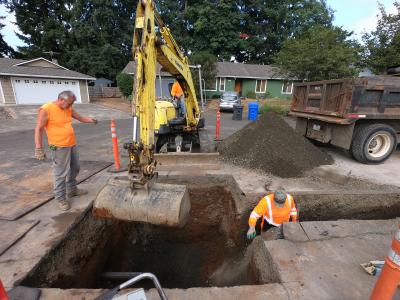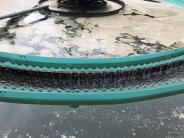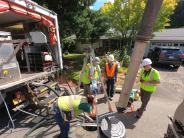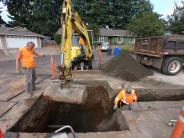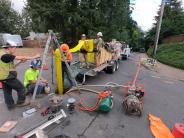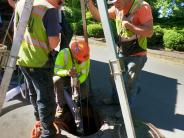Upgrading Existing Infrastructure
The City’s existing wastewater treatment plant is near capacity, and the pipes that move sewage from homes and businesses to the treatment plant are aging. As pipes age and deteriorate, they can let in rainwater and groundwater, which adds to the wastewater in the system and overwhelms the treatment plant during storm events. When the plant has more incoming wastewater than capacity, it cannot function properly. This can lead to untreated wastewater entering Tickle Creek.
The City of Sandy aims to eliminate pollution to Tickle Creek by upgrading the plant’s capacity and replacing aging pipes in the system.
UPGRADES TO EXISTING TREATMENT PLANT
Sandy is upgrading the existing plant to increase capacity, improve performance, and add automation to reduce human error.
The planned improvements to the existing treatment plant are divided into three work packages, all of which are either complete or are underway and on track to be completed by 2023. Work scheduled for the latter half of 2022 includes new UV and filtration disinfection processes, and rehabilitation of the aerated sludge storage basin. These upgrades will add capacity and automation to the plant and improve the solids handling processes.
The City has hired an engineering firm, West Yost, and a contractor, Slayden, to design and construct the first work package of improvements.
When the upgrades to the existing plant are complete, the City will have more wastewater capacity. However, a new wastewater treatment plant is still needed to manage the expected growth of Sandy.
The total costs of these improvements is approximately $10.5 million.
IMPROVING AGING PIPES
By repairing and replacing aging pipes in the sewer system, Sandy can reduce wastewater flows during storm events and alleviate the strain on the treatment plant.
In 2021, the City replaced aging concrete sewers in two of Sandy’s eight sewer basins. This work is expected to reduce the inflow and infiltration of rainwater and groundwater into Sandy’s sewers by up to 40%.
In May 2022, the City began the process of repairing two more basins. By the end of 2022, half of Sandy’s aging sewer lines will be less vulnerable to inflow and infiltration. The City will continue to rehabilitate aging sewer lines through 2026.
Preliminary data shows that the repairs are working as intended, with significant flow reductions measured by our engineering team. Further data analysis is ongoing to confirm the results.

